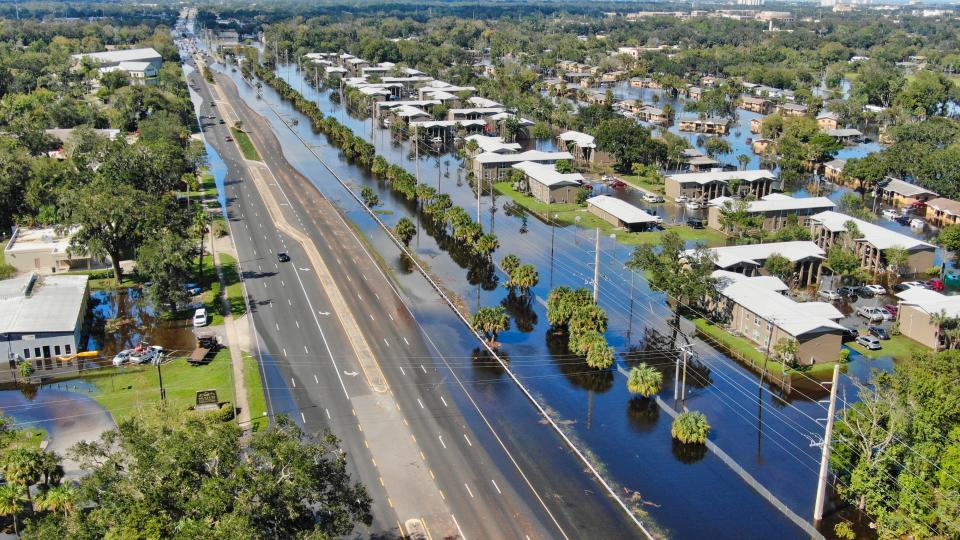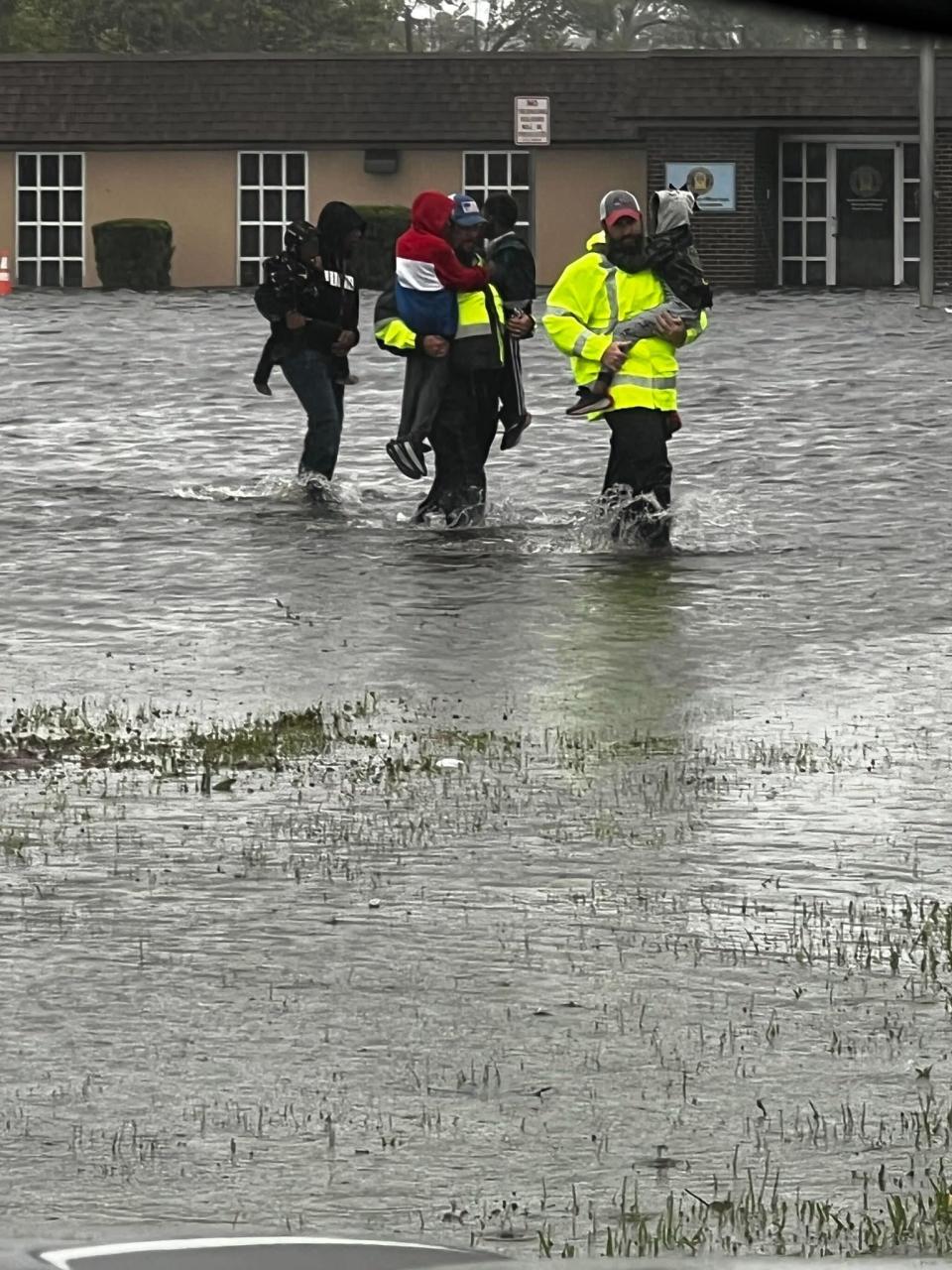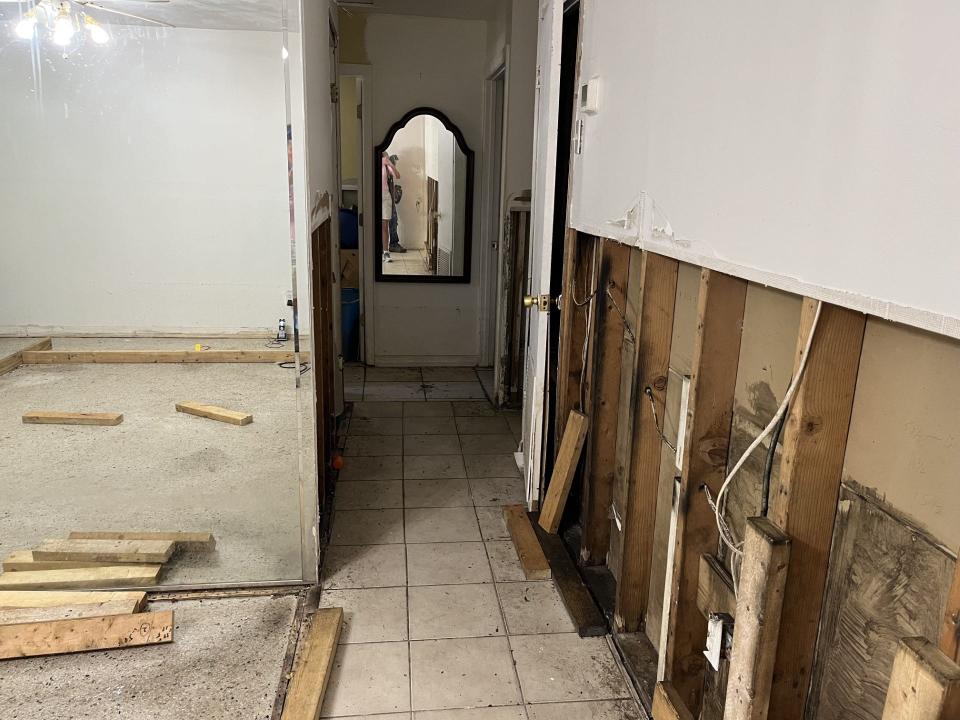Hope for flood-weary Daytona residents: $3 million U.S. Army Corps study up for approval
DAYTONA BEACH — After decades of catastrophic flooding in the city's historic core, a major flood study aimed at looking for solutions is poised to kick off next month.
On Wednesday night, Daytona Beach city commissioners will vote on a proposed agreement to partner with the U.S. Army Corps of Engineers on a two-year, $3 million feasibility study that will be fully funded by the federal government.
The six-page agreement outlines the roles and responsibilities of the city and the U.S. Army Corps of Engineers for the long-awaited flood control study that is hoped, but not guaranteed, to lead to a flood mitigation project that the federal government would largely fund.
Estimates for the work needed in Daytona Beach "run in the hundreds of millions," Daytona Beach Mayor Derrick Henry has said.
"The city is excited about getting started," said Assistant City Manager Andrew Holmes. "Hopefully the study will provide answers and solutions. It's a problem that's very difficult to solve."

The study area is bounded by Nova Road, Orange Avenue, Ridgewood Avenue and Beville Road. The low-lying, bowl-shaped topography of the area has made the southern end of the Midtown neighborhood and the Fairway Estates neighborhood vulnerable to water rising as high as three or four feet during especially heavy rainstorms and tropical storms.
Many residents have been forced out of their homes for months, or in some cases for over a year after murky floodwater seeped inside and destroyed everything from their flooring to their furniture.
The study, which will conclude in February of 2026, will be led by a team of city officials and an array of other experts.
"A feasibility study is the first step toward a potential federally cost shared project that could be part of the city's overall, long-range flood resiliency strategy," states a portion of the Jan. 3 city manager newsletter.
Whatever the team comes up with probably won't stop the flooding entirely, but the goal is to dramatically reduce it.
Expert and experienced officials will contribute
The city portion of the team will include Holmes and Utilities Department Director Shannon Ponitz, who has worked for the city for nearly 24 years.
"Shannon understands the history of what's been looked at, and the history of drainage in this area," Holmes said. "We'll support (the Army Corps of Engineers) in every way."

The study team will also be made up of 25 experts including planners, engineers, biologists, geologists, hydrologists, surveyors, archaeologists, economists, real estate specialists and others.
Numerous state and federal agencies will be consulted.
"They'll draw expertise from wherever it's available," Holmes said.
Jim LaGrone, who's with the U.S. Army Corps' Jacksonville district office, will be the project manager. The Jacksonville district office is responsible for the area encompassing Florida and the Caribbean.
Why isn't the Daytona flooding study area larger?
The public will have a chance to weigh in at some point, but there are no scheduled meetings yet for that to happen, Holmes said.
One question local residents have already had is why the study isn't looking at a larger area. Portions of the city to the north, west and east also flood, especially the Beach Street corridor which has been inundated again and again when the Halifax River tops its banks.
When the city formally applied for federal assistance on the study about eight years ago, those were the boundaries submitted, Holmes said. That locked the city into those limits, and it can't be changed now, he said.

The good news for Daytona Beach's flood-weary residents is that the federal government agreeing to fund the study increases the odds that more money will flow from Washington, D.C., for a major flood mitigation project.
It was in early March last year that it was announced Congress had approved spending $3 million to fully fund the study. Daytona Beach, state and federal leaders had been trying for 15 years to line up funding for an Army Corps of Engineers flood mitigation study.
When Gov. Ron DeSantis represented Florida's 6th congressional district in the U.S. House of Representatives from 2013 to 2018, he got in the fight. U.S. Rep. Michael Waltz took over the 6th congressional post right after DeSantis, and he battled to get the study funding lined up for years until he finally got a yes last year.
The city made its first big push to tackle the flooding problem in 2009 when more than 20 inches of rain fell over a six-day period and 790 structures were damaged.
A report recommended a regional solution with a total bill of $100 million. Unable to pull together money for a study much less $100 million, the city started asking Congress for help every year.
The city was willing to put up $1.5 million for the $3 million study, and had made requests in Tallahassee and Washington, D.C., for the other $1.5 million every year since 2009.
Battling low elevation
The Midtown and Fairway Estates neighborhoods east of Nova Road sit about five to six feet above sea level. The Federal Emergency Management Agency's flood elevation is around eight feet above sea level, and only buildings that sit at that eight-foot threshold or higher stayed dry inside during Tropical Storm Ian in 2022.
Some people blame the Nova Canal for Midtown's flooding because the open ditch that runs along the neighborhood's western edge also tops its banks during heavy, unrelenting rain.
The state-controlled Nova Canal runs from Ormond Beach south to Port Orange. It has offshoot pipes along its multi-city corridor that reach to the river and release water – when the Halifax doesn't rise so much that it blocks that outflow.
"The Nova Canal has capacity problems when the rainfall is so intense that it causes flooding in Midtown, but I don't know that it's causing the flooding," Holmes said last fall. "I think it (the canal) needs to be looked at, and it might be part of the solution, but I don't think it's the cause of all our flooding."
Midtown's main flooding foe is simply low elevation, Holmes said.
"In Midtown the land is very low and very flat, so the water tends to accumulate in the low areas," he said.
Daytona neighborhood topography curse: Low elevation makes Daytona's Midtown vulnerable to chronic flooding
Cynthia Slater has lived in Midtown all of her 66 years, and she's been flooded out of her home multiple times. She's cautiously optimistic about the Army Corps study.
"It's good to hear and know it's moving forward with the Army Corps of Engineers," said Slater, longtime president of the Daytona Beach branch of the NAACP. "But it's a two-year study, so it's nothing that will get us prepared for the next storm. We need to take all precautions for storms for now."
Nonetheless, she's still grateful for the study, and called it "long overdue."
"At least we're moving in the right direction," Slater said. "It'll be good for the community to know it's happening."
You can reach Eileen at Eileen.Zaffiro@news-jrnl.com
This article originally appeared on The Daytona Beach News-Journal: Daytona Beach to consider US Army Corps flooding study of Midtown

